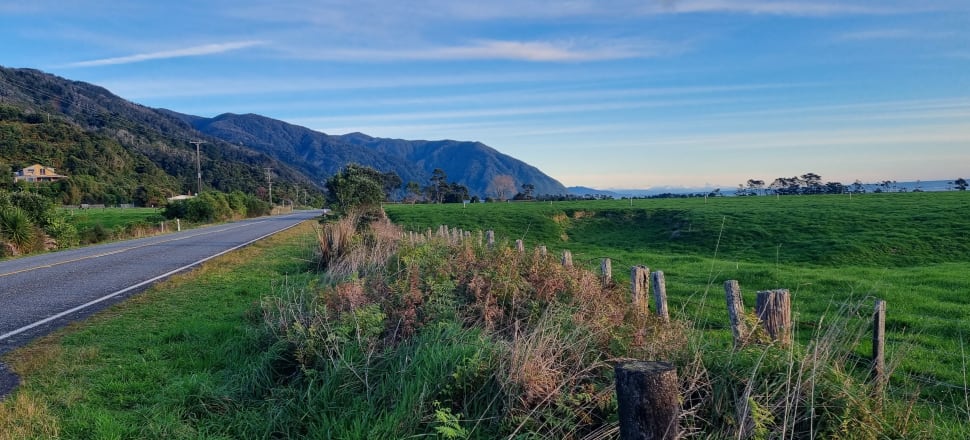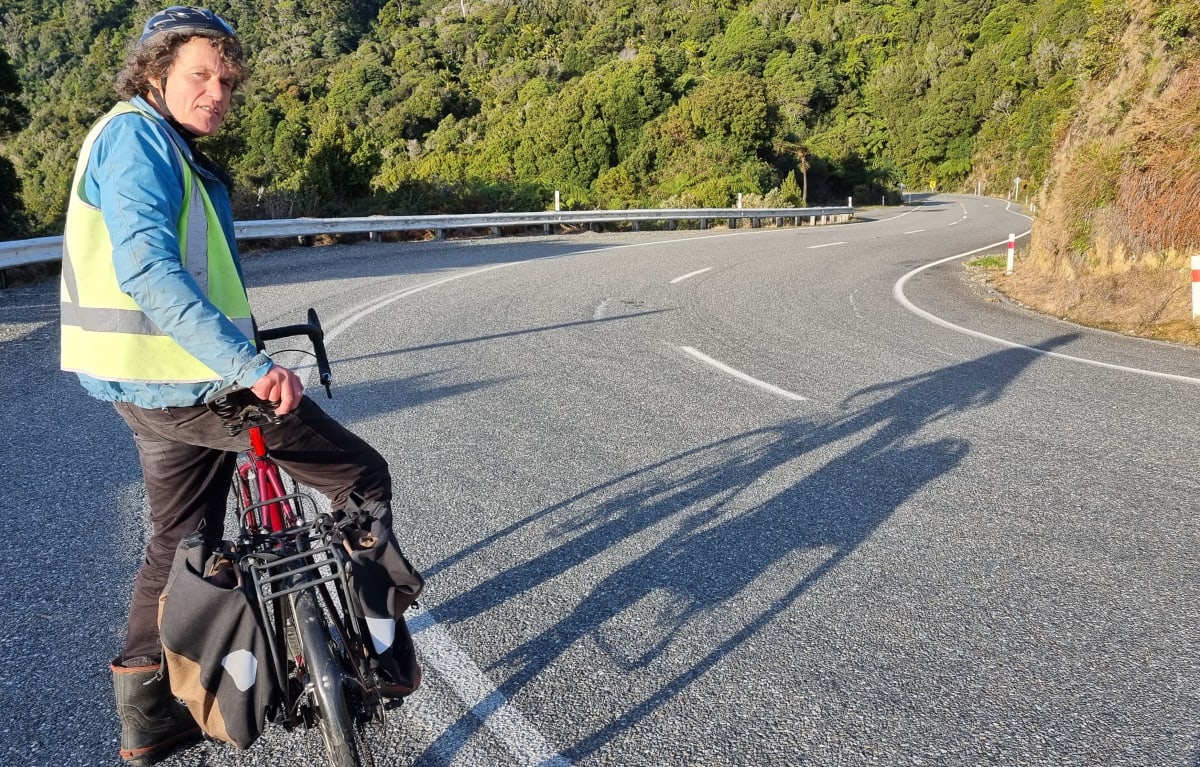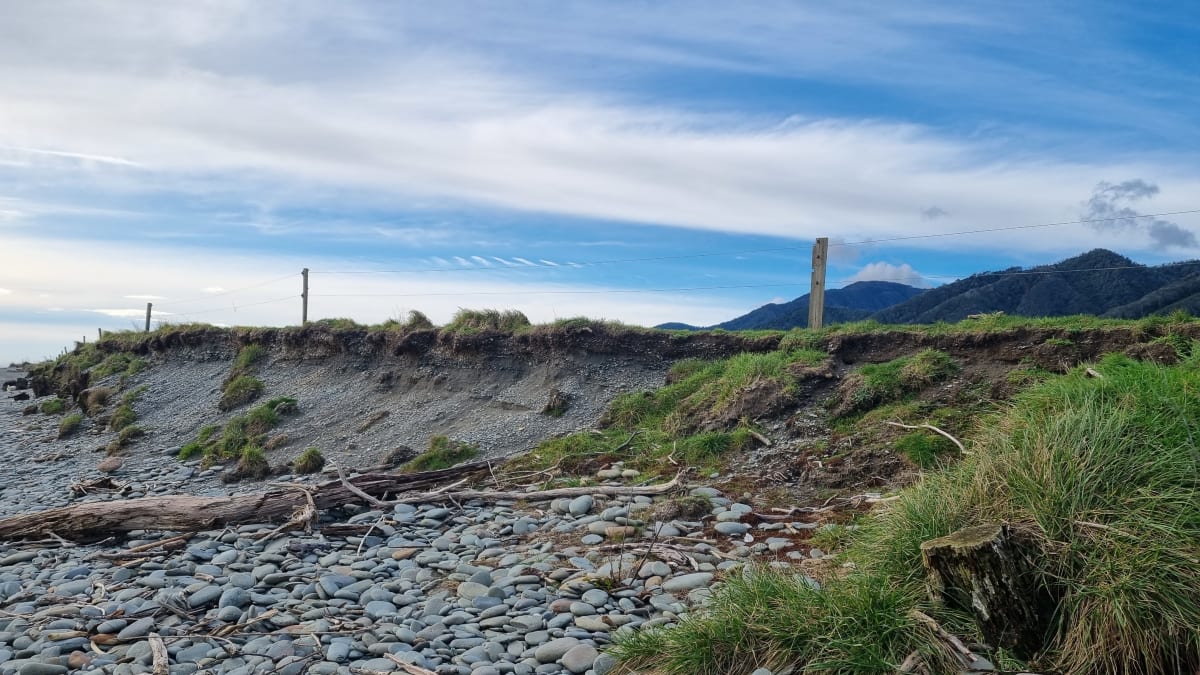
It’s David v Goliath round two – and back to the cake stalls – for a West Coast community trying to stop a sand-mining venture on the Barrytown Flats
TiGa Minerals is having a second crack at winning approval to unearth and process rare minerals on farmland between the sea and scenic State Highway 6 on the South Island’s West Coast.
Locals, meanwhile, are gearing up for another bid to have the decision-making taken out of council hands.
The Coast Road Resilience Group has appealed to the Minister for the Environment to “call in” the application.
The group says the proposed mining method will cause significant and irreversible damage to the environment and threaten a taonga species – the tāiko, or Westland petrel.
In a letter to the minister the residents say they have concerns about the capacity of local councils to impartially process the consent.
“The Tai Poutini Plan [new district plan] is highly enabling of extractive industries and a number of councillors may have conflicts of interests – declared or undeclared,” they say.
The Australian miner wants to open-cast the low-lying coastal strip to extract ilmenite, garnet and other rare minerals in an operation it says will create more than 100 jobs, inject $34 million a year into the local economy and generate annual export earnings of $63 million.
In its previous incarnation as Barrytown JV, it failed in a bid for resource consent after commissioners appointed by the Grey district and West Coast regional councils found it was short on information about potential environmental effects.
But celebrations among its opponents were muted.
Coast Road resident Katherine Crick says the implication was consent could be granted if the company did its homework.
“It was clear they’d be back for another go. They’ve done a lot more work over the past year and they seem pretty confident they’ll win.
“So we’re having to gear up to fight again. It was a bad idea the first time around and it still is.”
The mining, to be done in strips, is expected to lower the elevation of the coastal land by about 1m.
And although the company now says it won’t be digging below the level of the water table and will restore the land to pasture, opponents say it can’t be certain how that will affect local waterways, springs and a nearby coastal lagoon.
“When we met with the TiGa guys, they were all guns blazing. It was all going to be positive and we had nothing to worry about.
“If it did go pear-shaped they’d pack up and move on,” Crick says.
Locals unconvinced
The apparent “suck-it-and-see” approach has done nothing to reassure locals.
Their two biggest concerns are the effect on the Coast Road – a celebrated tourist drive – and on the only breeding colony of the tāiko 3km north of the mine site.

TiGa Minerals says the mine will generate 50 truck and trailer movements a day on the highway as the ore is carted south to Greymouth or north to Westport – the company has yet to decide which.
If it chooses Westport, it won’t run the trucks in the early morning or evening to avoid disorienting the birds with headlights as they fly out to sea to feed or back to their burrows at night.
Otherwise the truck and trailer units will be on the road from 5am till 10pm seven days a week.
Locals who cycle the road rated by Lonely Planet as one of the 10 top coastal drives in the world say the constant heavy traffic will put an end to that status.
The winding road up the coast from Greymouth to Westport features spectacular views of the Tasman, towering limestone cliffs and the bush-clad maunga of Paparoa National Park.
It passes through the tiny village of Punakaiki, heavily congested with visitors to the Pancake Rocks, and soon to be more so with the opening of a new visitor centre.
It was never a road designed or suited for constant heavy trucks, cyclist Michael Weston says.
The Coast Road local has been biking the highway since he was a boy to visit friends or just for exercise.
Pedalling in his favoured gumboots, Weston is a familiar sight on the scenic route.
“The road may be state highway but it’s narrow and there are heaps of blind bends that you have to get around really fast because trucks have no choice but to cross the centre line.
“It’s the only way they can get around the corners.”
At present that’s only just a manageable risk, Weston says.
“We have a group of milk tankers that go north in the morning – there and back twice a day.
“But we know when to expect them and you can avoid being on the road at that time. So what we have at the moment is a relatively minor hazard.
“What we’re going to have with these ore trucks is a major hazard, all day, every day.”
The company estimates the mine would also generate 160 car trips a day.
It says the extra traffic will make no noticeable difference to the safety or efficiency of the highway: existing peak traffic flows on the road are low at just 96 vehicles an hour and the road can easily accommodate more.
Suzanne Hills, another Coast Road resident, says that ignores the risks she and other road users encounter now on a daily basis.
“Most of the road doesn’t have a shoulder so as a cyclist you’ve got the white line then a cliff, a bluff or a ditch.
“Trucks passing me have to cross the meridian line to overtake safely and they regularly pass on solid yellow lines.”
Those most at risk, Hills predicts, will be cycle tourists whose numbers have soared since the opening of the nearby Paparoa Track.
“They’re the ones looking around at the scenery. If we’ve got a situation coming where there are another 50 trucks a day, that’s seriously dangerous. If this goes ahead, there will be a fatality.”
Battle stations
In her sunny kitchen overlooking the green coastal flats and a platinum Tasman, Crick is surrounded by campaign paraphernalia – neat piles of notes, research papers and phone lists.
She and her partner moved to Barrytown three years ago, attracted like other new arrivals to its peace and natural beauty.
The mine, she says, would wreck the amenity value of the area, a view shared by others who’ve bought or built there in recent years.
“We’ve had meetings in the Barrytown hall and they were packed – standing room only.
“We’ve formed an incorporated society – the Coast Road Resilience Group – and we’re fundraising to fight this.”
The group has run stalls at the Fox River market, held a barn dance and community lunches, she says.
Weighed against the resources of a corporate miner, the war-chest is pretty meagre, Crick admits.
“We’re lucky that there are many well-informed people in this community and they have connections with others with specialist knowledge to help us.”

In 2021 the coast councils decided on limited notification of the Barrytown sand-mining application, inviting only a handful of close neighbours of the site to submit, including Weston.
This time around, the wider Coast Road community, their advisers and the general public will have a chance to tell the commissioners what they think of the rejigged mining proposal.
TiGa Minerals has asked the councils to publicly notify its application, saying it wants the process to be transparent and for everyone to be listened to.
Greymouth Mayor Tania Gibson says she hopes those who support the mining venture will make themselves heard as well.
“A lot of people who want this to go ahead don’t say so because they’re worried about the reaction.
“But the world needs these minerals and the West Coast needs the investment and the jobs.”
Same old, same old
It’s a familiar refrain.
Mining was the making of the Coast – and it’s still the region’s third-biggest earner after tourism and agriculture.
Many mines are family-run ventures employing half a dozen workers on alluvial gold claims or quarries.
But larger investors willing to chance their money still find an encouraging response from councils and communities who’ve seen local economies flourish – for a time at least – on the back of such successful ventures as Reefton’s Globe Progress gold mine.
The ill-conceived and abysmally managed failures – Pike River coal mine, for example – are deeply resented and mourned but rare.
And those who oppose mining are often seen as troublesome outsiders standing in the way of progress who don’t understand what makes the region tick.
But there are signs that is slowly changing.
At Barrytown, sixth-generation West Coaster Riarnne Klempel runs a thriving accommodation business in coastal holiday homes.
Her clients are a mix of overseas visitors and New Zealanders wanting to chill out and surf or just relax or tramp in surroundings promoted by Development West Coast as “untamed natural wilderness”.
The proposed TiGa mine, to the north of her properties, could affect her business and is having a chilling effect on other potential hospitality investors Klempel says.
“They’re waiting to see if the mine gets approval. The company goes on about ‘positive effects’ like social and economic benefits.
“But there are other things they don’t mention.”
Shore thing
One of those, Klempel says is the risk of coastal inundation.
Large chunks of land along the Barrytown foreshore are falling away as the sea bites into the coastline and every year the waves travel further inland.
“The land’s already been destabilised by dredge-mining in the old days and chunks are just falling off – a metre a year or even two before La Nina, and the farmers just have to keep moving the fences back.”
TiGa Minerals is proposing to build and plant a protective bund around the mining site.
But the residents worry mining will change the hydrology of the flats and further destabilise the foreshore, coastal lagoon and waterways.
The initial mine would operate for five to seven years but that’s just stage one of TiGa’s wider plans for the Barrytown Flats.
The familiar references to economic benefits from the mine exasperate local opponents.
The West Coast unemployment rate is 3.4 percent, matching the national figure, and the economy is outperforming all but one other region.
Much of that is down to tourism on the Coast Road residents say.
“The councils seem stuck in this old narrative that we need every mining project we can get and they need to enable them.
“But there are good proposals and bad ones.
“The Coast economy has changed and that mindset needs to change too.”
Some mining proposals are good for the region and some are not, Klempel says.
The TiGa Minerals resource consent application has been sent out for peer review by the two councils, and if it’s not called in by the minister it’s expected to be publicly notified later this year.
Made with the support of the Public Interest Journalism Fund








